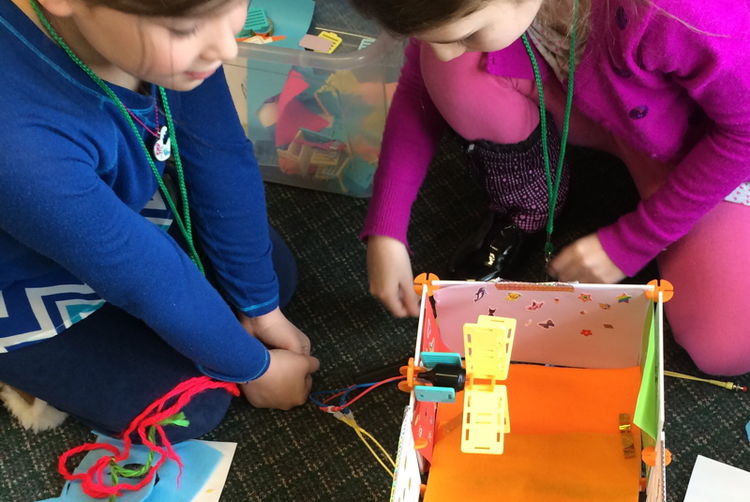STEM at School
Engineering Inspired by Play

When Alice Brooks and Bettina Chen, the engineers who invented Roominate—a toy that engages girls in STEM learning—talk about what put them on their path, they say it was the things they played with as children.
Toys that got them interested in tinkering, they say, ultimately inspired their careers.
We know the kind of play that best supports young girls’ STEM learning sparks their imaginations and allows their ideas to take root in new creations. In search of appropriate toys, we were intrigued by Roominate and after observing children playing with it, decided to share some of what we’ve seen.
With Roominate, kids first work out structures—a dollhouse, classroom, helicopter, or any other creation—using plastic panels and connectors. Then they wire them with working circuits. Imagine constructing a ferris wheel then wiring it with flashing lights and making it spin.
At the R&D stages, Brooks and Chen watched girls working with prototypes at a museum. They noticed that the girls engaged most in engineering circuits and building when it was an essential part of play.
It seems to us that they have succeeded in integrating that finding into the toy’s design. It certainly inspires hands-on creativity. We were amazed by the possibilities. You can see some of them on the young inventors page of the Roominate website, which highlights real girls' projects.
We also noticed that designing and creating with Roominate is an accessible activity in the sense that there are no wrong ways to do it. Instead there are opportunities for refining an idea. These are engineering activities can be completed quickly to allow for reflection and conversations about what worked well or what was learned—conversations that can happen during school, in an after-school setting, or at home at the dining room table.
For anyone in our Network who is interested in trying Roominate at school: Amy Turner, a first grade teacher at North Falmouth Elementary School has drafted a series of lessons around the toy. It includes great questions to support student learning, connections to the standards, instructions on how to facilitate building, and links to literature and web resources. She has offered to share the unit with the Network, so please email events@capecodste
We hope you’ll be inspired to play and build—and let us what you learn in the process.